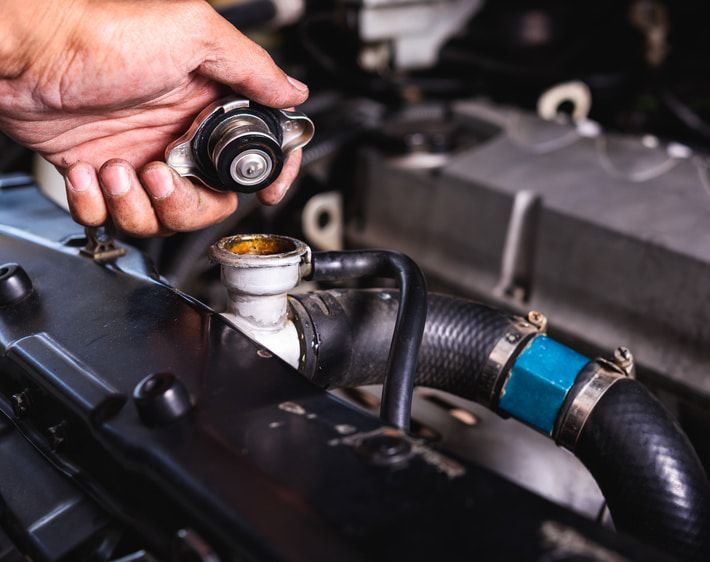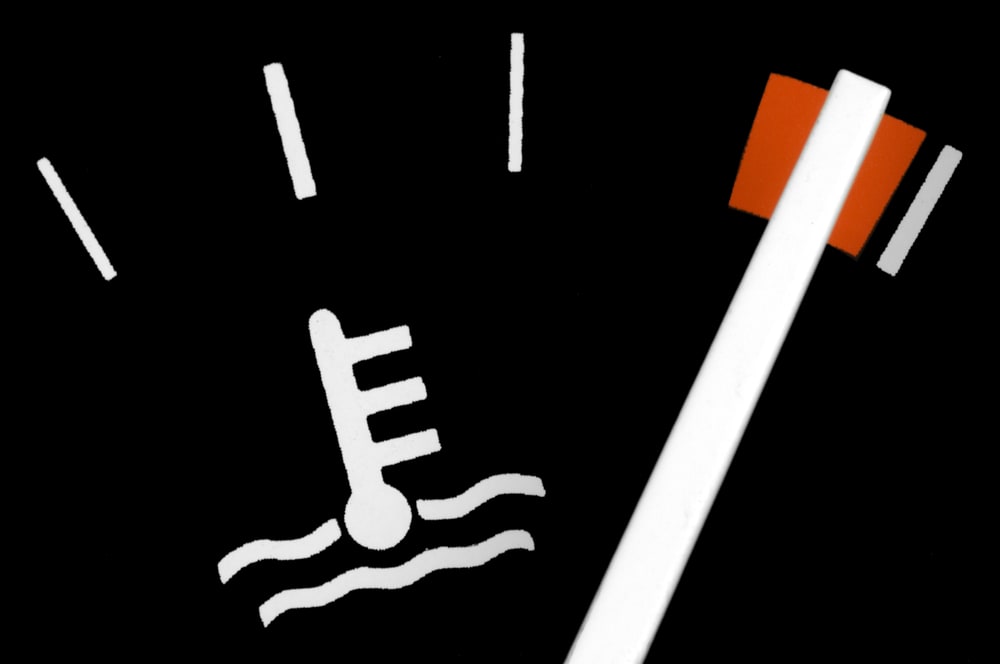Driving with the low coolant light on can be risky. It’s a sign that your car’s engine might overheat.
But how long can you continue driving safely with this warning? The low coolant light warns you of potential engine trouble. Ignoring it can lead to major issues. Overheating can damage your engine. It may even cause it to fail completely.
Cars rely on coolant to regulate engine temperature. Without enough coolant, the engine can overheat quickly. The warning light means you need to take action. It’s essential to understand what this light means and how to respond. In this blog, we will explore how long you can drive with the low coolant light on. We’ll also discuss the steps you should take to stay safe and avoid costly repairs.
Low Coolant Light Basics
Driving with the low coolant light on can cause serious damage to your engine. It’s crucial to address this issue immediately. The longer you drive, the higher the risk of overheating.
Driving with a low coolant light on can be risky. The low coolant light alerts you to a potential problem with your vehicle’s cooling system. Understanding what this light means can help you address the issue promptly.What It Means
The low coolant light indicates that your engine coolant level is below the minimum threshold. Coolant, or antifreeze, helps regulate the engine’s temperature. It prevents the engine from overheating. Without enough coolant, your engine can suffer serious damage.Common Causes
Several factors can cause the low coolant light to turn on. Leaks in the radiator or hoses are common culprits. A faulty radiator cap can also lead to coolant loss. Sometimes, a malfunctioning sensor triggers the light. Regular maintenance can help prevent these issues. By understanding these basics, you can respond quickly when the low coolant light appears. “`Immediate Actions
When the low coolant light comes on, it’s essential to take immediate action. Ignoring the warning can lead to severe engine damage. Acting swiftly ensures your safety and prevents costly repairs. Below are the steps you should follow right away.
Pull Over Safely
First, find a safe spot to pull over. Avoid stopping on busy roads. Use your hazard lights to alert other drivers. The goal is to stop the car in a secure location.
Check Coolant Levels
Once parked safely, check the coolant levels. Wait for the engine to cool down. Opening the radiator cap while the engine is hot is dangerous. Use a cloth to protect your hand if you must open it sooner.
Follow these steps to check the coolant levels:
- Locate the coolant reservoir. It’s usually a transparent container near the radiator.
- Check the fluid level against the markings on the reservoir.
- If the coolant level is low, add more coolant. Use a 50/50 mix of coolant and water.
Make sure to secure the cap tightly after refilling. This helps to maintain the correct pressure in the system.
Important: Always carry extra coolant in your car. This ensures you can top up if the low coolant light comes on.
| Step | Description |
|---|---|
| 1 | Pull over safely using hazard lights. |
| 2 | Check coolant levels after the engine cools down. |
| 3 | Add coolant as needed, using a 50/50 mix. |
Potential Risks
Driving with a low coolant light on can be risky. It can lead to serious engine problems. Knowing these risks can help you avoid costly repairs.
Engine Overheating
Low coolant levels can cause your engine to overheat. The coolant keeps the engine at a safe temperature. Without enough coolant, the engine gets too hot. This can lead to the engine shutting down. Overheating can cause the engine to fail completely. It’s important to stop and check your coolant levels.
Possible Damage
Driving with low coolant can damage the engine. The engine parts can warp from the heat. This can lead to expensive repairs. The head gasket can also blow. This is a major repair that can cost a lot. Low coolant can also damage the radiator. The radiator helps keep the engine cool. If it gets damaged, the engine can overheat even more. It’s best to fix low coolant issues right away.
Credit: www.firestonecompleteautocare.com
Temporary Solutions
Driving with the low coolant light on is risky. You might wonder what to do if you see this warning. Let’s explore some temporary solutions to keep you going until you can get professional help.
Topping Off Coolant
First, you can top off the coolant. This solution can help keep the engine from overheating. Follow these steps:
- Let the engine cool completely.
- Find the coolant reservoir under the hood.
- Check the current coolant level.
- Open the cap carefully.
- Pour the coolant into the reservoir up to the fill line.
Use the correct type of coolant for your vehicle. You can find this information in the owner’s manual. Topping off might not fix the underlying issue, but it can provide a temporary fix.
Using Water In Emergencies
If you don’t have coolant, you can use water in an emergency. This is a short-term solution only. Here’s how:
- Let the engine cool down.
- Locate the coolant reservoir and open the cap.
- Slowly pour water into the reservoir.
- Fill up to the fill line.
Use distilled water if possible. Tap water can contain minerals that might harm your engine. Using water is not ideal, but it can help you get to a safe location or a repair shop.
Remember, these temporary solutions are just that—temporary. Driving too long with low coolant can damage your engine.
Driving Tips
Driving with the low coolant light on can be risky. It’s crucial to follow some essential driving tips to avoid severe engine damage. Here are a few practical tips to consider.
Short Distances Only
If the low coolant light turns on, limit your driving to short distances. The engine needs coolant to stay cool. Without it, the engine can overheat quickly.
Driving short distances helps to avoid major damage. Keep trips under 5 miles. This reduces the risk of overheating.
Monitoring Temperature Gauge
Keep a close eye on the temperature gauge while driving. The gauge shows the engine’s temperature. If it rises too high, the engine could overheat.
If the gauge moves toward the red zone, pull over. Turn off the engine and let it cool down. Wait at least 20 minutes before checking the coolant level.
| Tip | Action |
|---|---|
| Check Coolant Level | Check and refill coolant if needed. |
| Listen for Unusual Sounds | Stop if you hear strange noises. |
| Plan Your Route | Avoid heavy traffic and steep hills. |
Following these tips can help you avoid engine damage. Remember, the low coolant light is a warning. Take it seriously and act fast to protect your vehicle.
When To Seek Help
Seeing the low coolant light on your dashboard can be stressful. It’s important to know when to seek help. Driving with low coolant can cause serious engine damage. Always act quickly to avoid costly repairs.
Contact A Mechanic
It’s wise to contact a mechanic as soon as the low coolant light appears. They can inspect the coolant levels and check for leaks. Mechanics have the tools to diagnose the problem accurately. They can fix issues before they become major problems.
Driving too long with low coolant can overheat the engine. This may lead to a complete breakdown. A mechanic can ensure your car is safe to drive again. Regular maintenance checks can prevent these issues.
Visit Service Station
Another option is to visit a service station. They can quickly top up your coolant. Service stations also check for any leaks or damages. It’s a good immediate solution if you are on the road.
Service stations offer quick fixes and advice. They can guide you on what to do next. If the problem is serious, they might suggest a full inspection. Quick action at a service station can save you time and money.
Preventive Measures
Taking preventive measures can help avoid the stress of driving with a low coolant light. Regular checks and maintenance ensure your car runs smoothly. These steps can save you from costly repairs and unexpected breakdowns.
Regular Maintenance
Regular maintenance is key. Schedule routine check-ups for your vehicle. This includes checking fluid levels, including coolant. Regular checks can catch problems early. This prevents the low coolant light from coming on.
Check For Leaks
Always check for leaks. A coolant leak can cause the low coolant light to appear. Inspect the ground where you park. Look for wet spots or puddles. If you find any, your car might have a leak.
Check the radiator and hoses. Look for signs of wear or damage. Replace any worn-out parts. This helps keep the coolant system in good condition.
Credit: repairpal.com
Long-term Solutions
Driving with the low coolant light on can harm your car’s engine. It’s vital to find long-term solutions to keep your engine running smoothly. Here, we’ll explore essential steps to ensure your coolant system stays in top shape.
Coolant System Inspection
A regular coolant system inspection is crucial. This process helps detect leaks, worn-out hoses, or other issues. An inspection should cover the radiator, water pump, and thermostat. You can follow a simple checklist:
- Check the coolant level.
- Inspect hoses for cracks or leaks.
- Examine the radiator for damage.
- Look at the water pump condition.
- Test the thermostat’s functionality.
Regular checks can prevent bigger problems down the road.
Possible Repairs
If your inspection reveals issues, some possible repairs may be needed. Here are common repairs:
| Issue | Repair Needed |
|---|---|
| Coolant Leak | Replace or repair the leaking part |
| Worn-out Hoses | Install new hoses |
| Faulty Thermostat | Replace the thermostat |
| Damaged Radiator | Repair or replace the radiator |
| Water Pump Issues | Install a new water pump |
These repairs can help ensure your coolant system works well. Always address issues early to avoid costly damages.
Credit: www.yourmechanic.com
Frequently Asked Questions
How Long Can You Drive With Low Coolant?
Driving with low coolant is risky. Stop and check the coolant level immediately.
What Happens If Coolant Is Low?
Low coolant can cause engine overheating. This can lead to serious engine damage.
Can I Add Water Instead Of Coolant?
Water can be a temporary fix. Use proper coolant as soon as possible for best results.
How Often Should I Check My Coolant Level?
Check your coolant level monthly. Regular checks help prevent overheating and engine damage.
What Are Signs Of Low Coolant?
Signs include overheating, steam from the engine, and a sweet smell. Check your coolant level if you notice these.
Conclusion
Driving with a low coolant light on is risky. It can cause engine damage. Stop and check your coolant levels. If needed, top it up. Regular maintenance is crucial. It prevents such issues. Always keep an eye on your car’s warning lights.
They help you avoid major problems. Remember, your car’s health depends on you. Drive safe and smart. Taking care of your vehicle ensures long-lasting performance.


